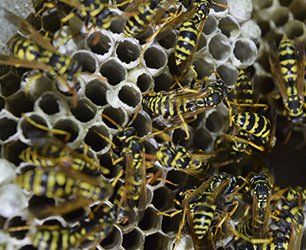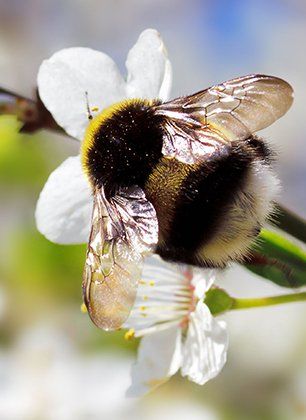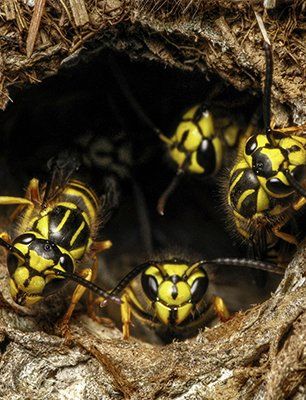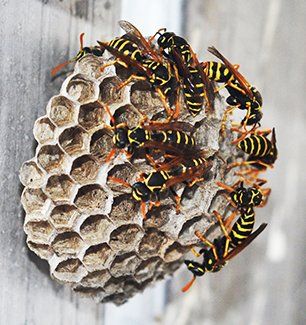Bees, Wasps, Hornets
Over 45 Years of Experience | Locally and Family Owned | Ohio State Lic. 965
Over 45 Years of ExperienceLocally and Family OwnedOhio State Lic. 965
A Job Only for the Professionals
Stinging insects such as bees, wasps, and hornets can be highly destructive and dangerous. Nests in or near your home are a threat to your children. Kids might disturb a nest, which may cause an attack. Carpenter bees burrow in walls and damage the structure.
If you stumble on a nest and accidentally threaten them, they may swarm. Otherwise, bees keep to themselves. Only professional pest control technicians and beekeepers should handle them, so please don't try to do this yourself. Contact Ernie's Pest Control
fast!

Facts About Bees
Color and shape:
- Black with some yellow
- Resemble bumblebees in both size and color
- Carpenter bees have yellow hair on their thorax and their abdomens are all black
- Bumblebees have hairy abdomens and are considerably more yellow
Behavior :
- Carpenter bees chew out tunnels in wood for egg laying
- They provide a protected site for developing larvae
- Females chews round, 1/2 inch diameter tunnels about one inch deep in wood
- They turn at a right angle and chew a further tunnel about 12 inches long
- The female deposits an egg in the end of the nest and packs it with pollen an inch deep
- This process is repeated until the entire nest gallery is filled
- The male carpenter bee guards the entrance and chases away predators
- He does not have a stinger but can be intimidating with his aggressive buzzing if people venture near his nest site
Habitat :
- Logs
- Dead trees and limbs
- Bare wood decks
- Fences
- Window sills
- Painted wood is subject to attack, but bare wood is preferred
Bees pest control tips
- Painting bare wood may deter bees, but that is not the best solution
- Schedule a bees pest control appointment
- Treating affected wood with residual pest control product may repel or kill bees
- Nest galleries may be treated once holes have been started
- When all the bees have been killed, holes may be plugged

Facts About Wasps
Wasp Nests
- Stinging wasps rely on nests for protection and rearing young
- Wasps have a range of nests:
- A burrow in the ground made by the female digger wasps
- Mud cavities attached to twigs, rocks, or human structures
- Paper fibers collected from dry wood and bark mixed with wasp saliva
Wasp Stings
- All female wasps have stingers, males do not
- No wasp species will attack unless they or their nest is threatened
- Yellowjacket colonies may release up to 100 defending wasps
- Wasp venom can release histamine, which dissolves red blood cells
- Most people can survive many stings with only temporary pain and swelling
- Hypoallergenic people can die from the stings


Facts About Hornets
Characteristics
- 1.2 inches long
- Black with white markings on most of its segments and face
Habitat
- Throughout North America
- Builds gray nests often attached to a tree limb, bush, or side of a building
- Nests may contain thousands of wasps
- Extremely aggressive when disturbed
- Nests usually located out of reach
- Best removed by professionals
Call 419-698-1015 now for a
FREE price quote.
24-Hour
Emergency Service
